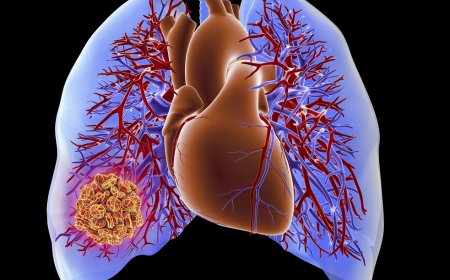How to Join Volunteer Cleanups at the Bosque Albuquerque
How to Join Volunteer Cleanups at the Bosque Albuquerque The Bosque Albuquerque, a 37-mile stretch of riparian forest along the Rio Grande, is one of the most ecologically significant and cherished natural spaces in New Mexico. This dynamic ecosystem supports over 300 species of birds, native cottonwood and willow trees, and a rich diversity of wildlife—all of which depend on the health of the riv
How to Join Volunteer Cleanups at the Bosque Albuquerque
The Bosque Albuquerque, a 37-mile stretch of riparian forest along the Rio Grande, is one of the most ecologically significant and cherished natural spaces in New Mexico. This dynamic ecosystem supports over 300 species of birds, native cottonwood and willow trees, and a rich diversity of wildlife—all of which depend on the health of the river corridor. Yet, like many urban natural areas, the Bosque faces ongoing threats from litter, invasive species, and human impact. Volunteer cleanups play a vital role in preserving this fragile habitat, ensuring it remains a sanctuary for both wildlife and the community.
Joining a volunteer cleanup at the Bosque Albuquerque is more than just picking up trash—it’s an act of stewardship that directly contributes to environmental resilience, public health, and community cohesion. Whether you’re a longtime resident, a new arrival, a student, or simply someone who loves the outdoors, participating in these efforts allows you to connect with nature while making a tangible difference. This guide provides a comprehensive, step-by-step roadmap to help you get involved, understand best practices, access essential tools, learn from real examples, and answer common questions—all to empower you to become an effective and informed volunteer.
Step-by-Step Guide
Participating in a volunteer cleanup at the Bosque Albuquerque is straightforward, but preparation and awareness significantly enhance your experience and impact. Follow these seven detailed steps to ensure you’re ready, informed, and effective on cleanup day.
Step 1: Research Upcoming Cleanup Events
The first step is identifying when and where cleanups are scheduled. The most reliable source for event information is the Bosque Ecosystem Monitoring Program (BEMP), a collaborative initiative between the University of New Mexico and local environmental organizations. BEMP coordinates regular cleanups throughout the year, particularly during spring and fall when weather conditions are optimal for outdoor work.
Additionally, check the websites and social media channels of partner organizations such as the Rio Grande Nature Center State Park, Friends of the Bosque, and Albuquerque Bernalillo County Water Utility Authority. These groups often post event calendars, flyers, and volunteer sign-up links. Google searches like “Bosque Albuquerque volunteer cleanup schedule 2024” or “Rio Grande volunteer events” will surface current listings.
Most events are announced at least two to four weeks in advance, so bookmark key websites and enable email notifications if available. Subscribing to newsletters from these organizations ensures you won’t miss opportunities.
Step 2: Register for the Event
Registration is required for nearly all organized cleanups. This allows organizers to estimate supplies, assign zones, and ensure safety compliance. Registration typically involves filling out a brief online form with your name, contact information, emergency contact, and any special considerations (e.g., mobility limitations, allergies).
Some events use platforms like Eventbrite or Google Forms, while others use direct email sign-ups. Always complete registration at least 48 hours before the event. This gives organizers time to prepare materials and notify you of any last-minute changes, such as weather delays or location adjustments.
Upon registration, you’ll usually receive a confirmation email with details including:
- Date and time of the event
- Exact meeting location (often a trailhead or parking area)
- What to bring and wear
- Who to contact on the day of the event
Save this email to your phone or print a copy. GPS coordinates or landmarks may be provided if the location is remote or poorly marked.
Step 3: Prepare Your Gear
Proper preparation ensures your safety and comfort during the cleanup. Most organizations provide gloves, trash bags, and grabbers, but bringing your own gear improves efficiency and reduces reliance on shared supplies.
Essential items to bring:
- Sturdy closed-toe shoes – Avoid sandals or flip-flops. Hiking boots or athletic shoes with good grip are ideal for uneven terrain, muddy patches, and debris.
- Long pants and long-sleeved shirt – Protects against sunburn, poison ivy, thorns, and insect bites. Light, breathable fabrics are best.
- Reusable water bottle – Hydration is critical. Avoid single-use plastics; many events encourage zero-waste practices.
- Sunscreen and hat – New Mexico’s high elevation means intense UV exposure, even on cloudy days.
- Personal gloves – While gloves are provided, bringing your own pair (preferably puncture-resistant) ensures a better fit and hygiene.
- Small backpack or tote – To carry your belongings and collect smaller debris during the cleanup.
- Hand sanitizer or wet wipes – Useful before and after handling trash, especially if handwashing stations aren’t available.
Optional but helpful items: a small first-aid kit, insect repellent, a lightweight rain jacket, and a phone charger pack.
Step 4: Arrive Early and Check In
Plan to arrive 15–20 minutes before the scheduled start time. This allows time to park, find the meeting point, and complete any last-minute check-ins. Many events begin with a brief orientation where volunteers are briefed on safety protocols, cleanup zones, and environmental context.
During check-in, you may be asked to sign a liability waiver (standard for volunteer activities). Organizers will assign you to a team and provide trash bags, grabbers, and gloves if you didn’t bring your own. Pay close attention to the safety briefing—it often includes warnings about:
- Sharp objects (glass, needles, metal)
- Unstable riverbanks
- Wildlife encounters (snakes, coyotes, birds’ nests)
- Weather hazards (sudden wind, heat)
If you’re unsure about any instructions, ask questions. There are no silly questions on a volunteer day—safety is the top priority.
Step 5: Follow Cleanup Protocols
Once assigned to your zone, begin collecting debris. Here’s how to work effectively and responsibly:
- Sort as you go – Separate recyclables (plastic bottles, aluminum cans) from non-recyclables. Some events have separate bins for hazardous waste like batteries or electronics.
- Use grabbers for hazardous items – Never pick up broken glass, needles, or chemical containers with bare hands. Use the provided tools.
- Do not dig or disturb soil – Some trash may be buried. Leave digging to trained staff; disturbing soil can harm plant roots or wildlife burrows.
- Document unusual finds – If you encounter large items (tires, appliances) or signs of illegal dumping, note the location and report it to the team leader. These are often logged for future enforcement or removal efforts.
- Stay with your group – Never wander off alone. The Bosque is vast, and trails can be confusing. Sticking together ensures safety and efficiency.
Remember: the goal isn’t perfection—it’s progress. Even if you only fill one bag, you’ve removed waste that could have taken decades to decompose or harmed local wildlife.
Step 6: Dispose of Waste Properly
After collecting trash, return to the designated drop-off area. Organizers will sort and transport the waste to appropriate facilities. Recyclables are often taken to local recycling centers, while hazardous materials are handled by licensed disposal services.
Do not leave bags unattended. If you’re unsure where to place your filled bag, ask a team leader. Some events use color-coded bags (e.g., blue for recycling, black for landfill), so follow labeling instructions.
After disposal, wash your hands thoroughly. Many events provide handwashing stations, but if not, use your sanitizer or wipes.
Step 7: Engage and Follow Up
Volunteering doesn’t end when the bags are collected. Take time to talk with other volunteers and organizers. Ask about future events, educational programs, or ways to get more involved. Many volunteers become regulars—and some even join advisory committees.
After the event, consider:
- Sharing your experience on social media with
BosqueCleanUp or #SaveTheBosque
- Writing a brief testimonial for the organizing group’s website
- Encouraging friends or coworkers to join next time
- Signing up for their email list to stay updated
Your continued engagement helps sustain momentum and expand the program’s reach.
Best Practices
Volunteer cleanups are more effective—and safer—when participants follow proven best practices. These guidelines ensure your efforts are sustainable, respectful, and aligned with environmental ethics.
Practice Leave No Trace Principles
The Leave No Trace Center for Outdoor Ethics offers seven principles that are especially relevant in riparian environments like the Bosque. Apply these during your cleanup:
- Plan ahead and prepare – Know the rules, weather, and terrain. Bring the right gear.
- Travel and park on durable surfaces – Stay on trails and designated parking areas to avoid compacting soil or damaging native vegetation.
- Dispose of waste properly – Pack out everything you bring in. Never leave gloves, water bottles, or snacks behind.
- Leave what you find – Do not take plants, rocks, or animal tracks. Even “small” souvenirs disrupt ecosystems.
- Minimize campfire impact – No fires are allowed during cleanups, but remember this principle for future visits.
- Respect wildlife – Observe from a distance. Never feed animals or approach nests.
- Be considerate of others – Keep noise low, yield to hikers, and be friendly. The Bosque is a shared space.
Work as a Team, Not a Solo Operator
Volunteer cleanups are collective efforts. Coordinate with your group: divide zones, share tools, and communicate hazards. One person spotting a hidden pile of trash can alert the whole team. Teamwork increases efficiency and reduces fatigue.
Also, be mindful of others’ physical limits. If someone is struggling, offer to switch tasks or take over for a few minutes. Encouragement and camaraderie make the experience more rewarding for everyone.
Use Technology Responsibly
While it’s tempting to document your cleanup with photos, be intentional. Avoid taking selfies in sensitive areas like nesting zones or steep riverbanks. If you do share photos, avoid tagging exact locations that could attract unprepared visitors or litterers.
Instead, use apps like iNaturalist to log plant or animal sightings during your cleanup. These observations contribute to scientific research and help track biodiversity trends in the Bosque.
Report Environmental Threats, Not Just Trash
Trash is visible, but other threats are silent. If you notice:
- Illegal dumping of construction debris or chemicals
- Signs of off-trail vehicle use
- Broken fencing or signage
- Unusual plant die-offs or invasive species outbreaks
Take a photo (without disturbing the area) and report it to the event coordinator. These observations help organizations prioritize larger restoration projects.
Stay Informed About Local Environmental Issues
The Bosque faces ongoing challenges: water diversion, climate change, and urban encroachment. Understanding these issues helps you contextualize your work. Read up on:
- Recent water allocation decisions affecting the Rio Grande
- The spread of invasive species like tamarisk (saltcedar) and Russian olive
- City of Albuquerque’s Bosque Master Plan updates
Knowledge transforms you from a volunteer into an advocate. You’ll speak more confidently about the Bosque’s value and inspire others to care.
Tools and Resources
Successful participation in Bosque cleanups relies on both physical tools and digital resources. Here’s a curated list of the most useful tools, apps, websites, and publications to support your efforts.
Essential Apps
- iNaturalist – Log plant and animal observations during your cleanup. Your data feeds into global biodiversity databases and helps scientists monitor ecosystem health.
- Google Maps / Gaia GPS – Download offline maps of the Bosque trail system. Cell service is unreliable in many areas.
- Recycle Coach – Learn what materials are accepted for recycling in Albuquerque. Helps you sort trash correctly.
- VolunteerMatch – Search for additional environmental opportunities in New Mexico beyond the Bosque.
Key Websites
- Bosque Ecosystem Monitoring Program (BEMP) – bemp.unm.edu – Primary source for cleanup schedules, research data, and volunteer training materials.
- Friends of the Bosque – friendsofthebosque.org – Organizes monthly cleanups and educational workshops. Offers volunteer training guides and maps.
- Rio Grande Nature Center State Park – emnrd.nm.gov/riograndenaturecenter – Provides trail maps, wildlife guides, and event calendars.
- Albuquerque Bernalillo County Water Utility Authority – abqwater.com – Offers information on water conservation and riparian health.
Print and Digital Resources
- Bosque Trail Map (PDF) – Available from BEMP or Friends of the Bosque. Essential for navigating the 37-mile corridor.
- “Invasive Plants of the Bosque” Field Guide – A free downloadable PDF from UNM’s Extension Office. Helps identify and report invasive species during cleanups.
- “The Rio Grande: A Natural and Cultural History” by Jack L. Hofmann – A well-researched book that deepens appreciation for the river corridor’s ecological and historical significance.
- UNM’s “Bosque Stewardship Handbook” – A comprehensive guide for volunteers, covering safety, ecology, and restoration techniques.
Supplies You Can Request or Purchase
If you plan to volunteer regularly, consider investing in:
- Reusable grabbers with extendable handles – Available at hardware stores or online (e.g., Amazon, REI).
- High-visibility vest or armband – Useful for group coordination and safety near trails.
- Waterproof trash bags – Stronger than standard bags; resist tearing on thorns or rocks.
- Portable handwashing kit – Small bottles of soap and water with a sponge for field use.
Some organizations offer tool lending programs. Ask if you can borrow gear before purchasing.
Real Examples
Real-world examples illustrate the impact of volunteer cleanups and the diversity of participants who contribute to the Bosque’s health.
Example 1: The Spring 2023 Bosque Cleanup Day
In April 2023, over 200 volunteers participated in a coordinated cleanup across four segments of the Bosque—from the Rio Grande Nature Center to the Isleta Bridge. Organized by BEMP and Friends of the Bosque, the event collected 3.2 tons of trash in just four hours.
Notable finds included:
- 17 discarded tires
- 147 plastic bottles
- 32 shopping carts
- Two abandoned bicycles
- Over 100 pounds of glass and metal
One volunteer, a retired teacher named Maria Gonzales, noticed a cluster of invasive Russian olive trees near the Tingley Beach area. She photographed them, reported the location, and returned two weeks later with a group of students to help remove them. That single report led to a targeted eradication project funded by the state.
Example 2: The High School Environmental Club Initiative
In 2022, students from Albuquerque Academy formed a volunteer team to adopt a 1-mile stretch of the Bosque. They cleaned the area monthly, documented changes over time, and presented their findings to the City Council. Their work led to the installation of new signage warning against littering and the placement of additional trash bins along their stretch.
The club also partnered with local artists to create a mural near the trailhead depicting native birds and plants. The mural now serves as an educational landmark and a symbol of youth stewardship.
Example 3: Corporate Team-Building Through Volunteering
Albuquerque-based tech company, NmTech Solutions, began organizing quarterly volunteer days for employees. Their teams rotated through different Bosque segments, cleaning and planting native grasses. Over two years, they removed over 1.5 tons of waste and planted 300 native willow cuttings.
Employees reported increased morale and a stronger sense of community. The company now highlights its environmental commitment in marketing materials, demonstrating that corporate responsibility and ecological action go hand in hand.
Example 4: A Solo Volunteer’s Journey
James Rivera, a single father and avid hiker, started volunteering alone after noticing trash accumulating near his favorite trail. He began showing up every Saturday with his 8-year-old daughter. Over time, they became regulars. James started documenting their progress on Instagram, which attracted local media attention. His story inspired other families to join, and today, he leads a weekly “Family Clean-Up Crew” that averages 15 participants.
James says: “I didn’t think one person could make a difference. But when you show up, consistently, with your child—you teach them that caring for the land isn’t optional. It’s a responsibility.”
FAQs
Do I need any prior experience to join a Bosque cleanup?
No. All skill levels are welcome. Organizers provide training on-site, and tasks are assigned based on ability. Whether you’re 12 or 72, there’s a role for you.
Are children allowed to volunteer?
Yes! Many events are family-friendly. Children under 16 must be accompanied by a responsible adult. Some organizations offer youth-specific events with educational activities tied to the cleanup.
What if it rains or is too hot on cleanup day?
Events are rarely canceled due to weather, but organizers may adjust timing or location. Always check your email or the organization’s social media the morning of the event. In extreme heat, volunteers are encouraged to hydrate frequently and take breaks in shaded areas.
Can I bring my dog?
Most organized cleanups do not allow pets. Dogs can disturb wildlife, trample native plants, or get injured by debris. Service animals are permitted with prior notice.
How often do cleanups happen?
Organized cleanups occur monthly during spring and fall, and quarterly in winter and summer. Some groups hold “ad-hoc” cleanups after major storms or holidays. Signing up for email lists ensures you’re notified of all events.
Is there a minimum age requirement?
There is no strict minimum, but children under 10 should be closely supervised. Some events have age-specific guidelines for safety reasons—check the event description.
What happens to the trash after it’s collected?
Recyclables are taken to Albuquerque’s recycling facilities. Hazardous waste (batteries, needles, chemicals) is handled by licensed disposal companies. Non-recyclable trash is transported to the landfill. Organizers track and report volume and types of waste to measure impact and advocate for policy changes.
Can I organize my own cleanup?
Yes! Many groups encourage community-led efforts. Contact BEMP or Friends of the Bosque for guidance on permits, safety protocols, and supply requests. They can help you plan a safe, effective event.
Will I get a certificate or recognition for volunteering?
Many organizations provide volunteer hours certificates upon request, especially for students or those fulfilling community service requirements. Some events offer T-shirts or small tokens of appreciation.
How can I support the Bosque if I can’t attend cleanups?
There are many ways to help:
- Donate to Friends of the Bosque or BEMP
- Advocate for river protection policies
- Reduce your own plastic use
- Teach others about the Bosque’s importance
- Participate in citizen science projects like bird counts or water quality monitoring
Conclusion
Joining a volunteer cleanup at the Bosque Albuquerque is not merely a task—it’s an invitation to become part of a living, breathing community that values the natural world. Each bag of trash removed, each invasive plant pulled, and each new volunteer recruited strengthens the resilience of this irreplaceable ecosystem. The Bosque is not just a park; it’s a lifeline for wildlife, a refuge for people, and a testament to what collective care can achieve.
By following the steps outlined in this guide, adopting best practices, using available tools, learning from real examples, and engaging with the community, you transform from a passive observer into an active steward. Your actions matter—not just for today’s cleanup, but for the decades to come.
There is no single hero in conservation. There are only thousands of ordinary people who choose, again and again, to show up. You have the power to be one of them. Lace up your shoes, grab your water bottle, and head to the Bosque. The river, the trees, and the birds are waiting.






























